
Donate to Innerviews
Since 1994, Innerviews has provided uncompromising, in-depth interviews with musicians across every genre imaginable. And it does that with no trackers, cookies, clickbait, or advertising.
Your donations are welcome to help continue its mission of highlighting incredible music and artists, without any commercial considerations.
Your contributions will be instantly transformed into stories and videos, and cover hosting and web management costs. Importantly, your dollars will help ensure Innerviews remains absolutely free to all visitors, independent of their ability to financially support it.
Please consider making a donation today by using the PayPal QR code below.

Howard Jones
Visceral Immediacy
by Anil Prasad
Copyright © 2013 Anil Prasad.
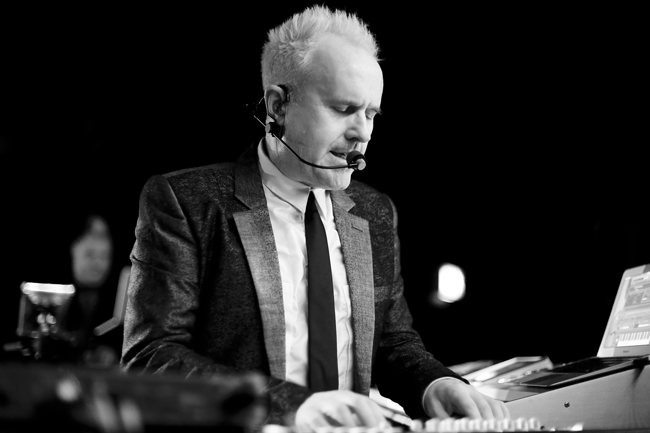
Solo piano, string quartets, minimalism, and choral music aren’t realms one typically associates with Howard Jones, but they’re all part of the British keyboardist and composer’s multifaceted musical psyche. Jones has always taken an exploratory approach to his output. It began in the ‘80s with his pioneering synthesizer work that propelled some of the most infectious and expansive pop music of the era.
This year, Jones is celebrating the 30th anniversary of the release of his first single “New Song” in 1983. The track’s success set the stage for 1984’s Human’s Lib and 1985’s Dream Into Action albums, both of which were multi-platinum, global smashes. A string of major hits emerged from those discs, including “What Is Love?,” “Things Can Only Get Better,” Life in One Day,” and “No One Is to Blame.” To commemorate the era, Jones has released three box sets of remastered albums comprising the entirety of his 1983-1992 Warner Bros. oeuvre. Jones is also using the anniversary to launch major new multimedia work, debuting during a series of November shows in the UK.
Today, Jones heads up Dtox, his own label designed to maximize creative freedom and ensure close contact with his worldwide fan base. He’s released a wide variety of projects on it, including his last studio disc, 2009’s Ordinary Heroes. The ambitious album showcases Jones’ songwriting at its most personally revealing, and features string quartet arrangements throughout. He’s also put out two solo piano albums, and an acoustic duo recording with guitarist Robin Boult.
Jones is extremely savvy when it comes to navigating the ever-changing waters of today’s music industry. He’s become an expert at exploring different approaches to releasing music, staging gigs, and ensuring the needs of his different audiences are met. He’s a case study in how positive personal philosophy and intelligent business choices need not be mutually exclusive.
You’ve previously celebrated other significant anniversaries. What makes the 30th anniversary different for you?
It’s a way of marking out time. I don’t see it as anything particularly special. For me, it’s a kind of construction to push me into doing something new and different, and challenging myself. Those are the main reasons. I’m calling this period a 30th anniversary celebration, but it could be called anything.
You’re debuting new music at your 30th anniversary concerts in November. Provide some insight into what people can expect from it.
I’ve written 35 minutes of new work. I challenged myself to take a different approach to it. It was written to be performed live. It wasn’t written to be heard on a CD or via iTunes. It’s a visceral experience with lots of sub-bass, lightning strikes, and drama. So, that put me in a completely new place when I was writing. I really enjoyed it. I realized it’s a very, very good idea to pursue. The new stuff flowed really well.
The music is very electronic and dramatic. It doesn’t follow conventional song structure. It builds from small things to great, big things. It has big gestures like choirs and aggressive sounds at times. The themes are about universal brotherhood. I wanted to reinstate what I consider the correct meaning of joy through the music. There’s a track called “Joy,” in fact. Each song also has a video created with my friend Stephen W Tayler. The videos include quotes from my favorite philosophers, because philosophy Is incredibly important to me. They feature Gandhi, Daisaku Ikeda, the president of Soka Gakkai International, who is the leader of the type of Buddhism that I practice, and Kierkegaard, the Danish philosopher. Essentially, what I’m trying to do is be myself as I am now and reflect that in the pieces.
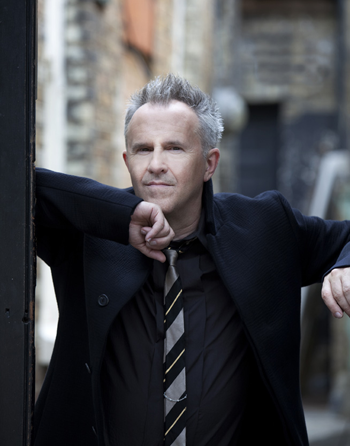
Your new music includes a piece inspired by Steve Reich. Tell me about it and your interest in his music.
I have been a fan of Reich since I was introduced to his music by my friend Chris Hughes at the end of the ‘80s. I think it’s the startling originality of the work that struck me. I particularly liked his phase shifting work and his technique of extracting musical information from speech. I was very fortunate to see his multimedia piece The Cave when it was performed at the Royal Festival Hall. I also went to see a concert in London in March 2013, which he attended, and I felt compelled to compose something inspired by his work. The piece is called “5 Pianos” and features five short phrases repeated and layered with an extra twist of the pianos morphing into electronics in the second half.
Do you eventually plan to release the new music somehow?
This music is the start of a dialog with the fans. I’ll be first playing it for them at the November 2013 concerts. They’ve already said they want a CD, but if it becomes a CD, I will approach the music differently. The structures and lengths may be changed or condensed. The way the music will be presented at the shows will be unique, because I will alter the pieces after that. This relates to another thing I’ve been feeling recently, which is what’s most fun these days is going to shows and experiencing being together with other people listening to and watching a great show that draws you in. I think there is much less interest in private listening to CDs and iPods. I’ve noticed that in myself too. There’s probably a trend going on in which recorded music doesn’t have quite the same impact or draws the same passion out of people that it used to.
We are recording and filming the shows, though. We’re going to treat an eventual DVD release of it uniquely. It won’t have a typical live concert feel. We want to integrate the video aspect into it so it’s almost a new thing. For instance, I commissioned a ballet for one of the new pieces I’ve written and we could use more of the ballet footage than concert footage when we release it.
You’ve recently comprehensively revisited your Warner Bros. releases in three box sets. Describe your approach to remastering and releasing the music.
The primary reason I did that is that I felt my early work wasn’t available everywhere in a consistent way. For instance, iTunes in the States didn’t have the whole of Dream Into Action available, which was my biggest album there. So, I felt I needed to ensure anybody that wanted to get hold of my work could do so. During that process, I decided to make the music sound as wonderful as possible. These tracks were originally mastered for vinyl, which didn’t suit the CD format very well. So, without destroying the essential character of the music, we fattened it up a bit and made it sound more glorious for a digital world. I also wanted to include really nice packaging, so people enjoy opening it up and looking through it.
Reflect on the crossroads between your creative process and the exploration of new technologies that informed your seminal ‘80s output.
I’ve played the piano since I was seven. I went to music college to study it as well, so I’m reasonably accomplished as a pianist, but my passion was for keyboards. On Saturday mornings as a kid, I would go to the local Hammond showroom and sit all afternoon and play B3s and C3s, as well as Yamaha AR100s. I don’t know why, but the lovely guys in the shop used to put up with that. I also saw Keith Emerson play the Isle of Wight festival in 1970, where he debuted ELP. He had a huge Moog modular keyboard and was the front man. I had never heard a sound like that before and I thought that surely this was the direction I wanted to go in.
By the time I’d left music college, that technology had been condensed down into affordable packages like the Moog Prodigy synth. I bought one and they sent me another by mistake, so I ended up with two of them. Then there were synths like the Roland Juno-60 and Jupiter-8, and Sequential Circuits Pro One. The Roland TR-808 drum machine was another breakthrough. These new, almost-affordable technologies really provided me a chance to do something different and orchestrate my music. I loved writing songs, but it was also fun to orchestrate them with all sorts of varied sounds. So, these things came together and I was very fortunate to be breaking at the time we had all the new toys and when studio recording was exploding as well.
Rupert Hine, who produced my first two albums, and Stephen W Tayler, who engineered them, were pioneering sampling. They brought that technology to my albums, too. I can’t believe how fortunate I was to be working with them. It was a coming together of a lot of different things. You can hear the excitement of us exploring those new sounds on the records. I’d think “Blimey, no-one’s ever heard a Yamaha DX7 synth on a record before.” That was buzzing through my brain. I also thought “People are going to be as excited as I am when they hear this.”
Did your first album Human’s Lib represent the recorded debut of the DX7?
I’ve heard it said that it did, but I don’t know if it’s true. I’ve also heard that Tears For Fears used it on a b-side beforehand. But I think “What Is Love?” is the first time anyone heard DX7-based bass and shakuhachi flute sounds.
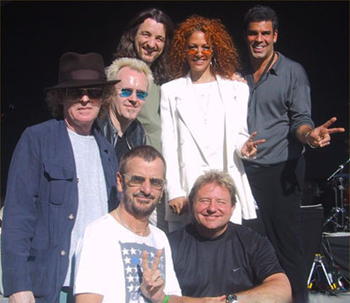
You played Keith Emerson’s keyboard lines on a Ringo Starr tour that featured Greg Lake. What was that like for you?
I was part of Ringo’s 2001 All-Starr Band. Greg Lake and Sheila E. were part of the group. Greg wanted to do some ELP stuff, including a section of “Karn Evil 9.” I have to say that has to be one of the most difficult pieces in the whole of the rock cannon to play. I spent two months going through every bar of it to ensure I nailed it. I literally had to practice it every day on tour. Playing it was like paying back my debt of gratitude to Keith Emerson for being such a great inspiration for my keyboard playing. During the tour, the rest of the band left the stage, so the trio of Greg, Sheila and myself played it, which was fantastic.
Your very first band Warrior had a prog-rock element. How do you look back at that experience?
Warrior was a sort of classical rock affair. I have a classical background and I wasn’t really writing vocal lines then. I was concentrating on tunes and chord progressions. So, it was mainly instrumental. I was still at school when we got that going. The guitarist was a very entrepreneurial guy. We actually did a vinyl pressing of our recording from a local studio that’s now quite sought after. The album was self-titled and has songs like “Squashed Cat Intestines” on it. [laughs] Very juvenile names.
One of your most intriguing earlier songs is “Assault and Battery” from Dream Into Action, which is a mini-epic full of dramatic twists and turns. What can you tell me about the song and the making of it?
The song is about the meat industry. It’s a very pro-vegetarian song that looks at the hypocrisy of meat. There’s a line in it that goes “Children’s stories with their farmyard favorites, at the table in a different disguise.” It’s a real go at the reality of what people are actually doing. I’m not militant about this now, because I’ve got other priorities that I’ve come to cherish more than vegetarianism, but I’m still a vegetarian and always will be. That song is particularly powerful because it has a very strong message, as well as these different sections that are very dramatic. We asked some children from a local school to sing during the middle section. The irony or coincidence of that is one of the singers, Tania Matos, grew up to become an incredible ballet teacher and choreographer. She did the choreography for one of my new pieces called “Sister Brother.”
Where did the calypso influence in your early work come from?
I think I’ve always been a person that absorbs everything from everywhere. In the early days, we played a place called The Caribbean Club. It wasn’t where rock bands or electronic outfits would play, but in those days, I’d take a gig wherever I could get it. So, I used to spend quite a bit of time there. I’d listen to a lot of the calypso and reggae music they were playing. During the early ‘80s in the UK, there were all kinds of genres of music simultaneously going. I couldn’t help getting a broad influence from everything I heard.
During the ‘80s synth-pop era, there were many one-fingered keyboardists out there. Did you ever feel like shouting out “Hey, there’s a real, trained musician over here amongst this lot?”
No, actually, it’s the opposite. I was the one defending those people. Writing great pop songs is something that comes from your creative mind, not from hours and hours of practice or the mastery of an instrument. It’s about organizing and coordinating sound. That’s what was so different about that era. It purified that sort of creativity because you didn’t have to be able to play Chopin or Rachmaninoff to play synths. You could express your creativity without spending 20 years at a keyboard. Writing a great pop song is a very difficult thing. If it wasn’t, everybody would do it, wouldn’t they? Very accomplished musicians have wanted to write great pop songs, but they can’t. Yet so many with one finger on a Moog Prodigy have had the sense of melody and sound organization that let them do so. Both rock and pop have always suffered from this terrible elitism. I never, ever wanted to be part of it, because it’s destructive. Elitism of any kind isn’t healthy.
How did Phil Collins come to produce the 1986 single version of “No One Is to Blame?”
During the ‘80s, they held Prince’s Trust concerts in the UK to raise money for the Prince’s charity. They would put together a superstar band and they’d ask me to play keyboards, which was great. Phil sang and drummed during these events. So, I got to know Phil that way. He really enjoyed playing my songs. I thought “No One Is to Blame” could have a slightly different approach to the version that was on Dream Into Action. So, I asked Phil if he would do it. He absolutely loved the song and said yes. We spent two days at The Farm, Genesis’ studio, working on the track. Phil did it while he was working on Genesis’ Invisible Touch album. Phil was a workaholic and fit in my project on the weekend. It was an amazing experience and the single became a huge success.
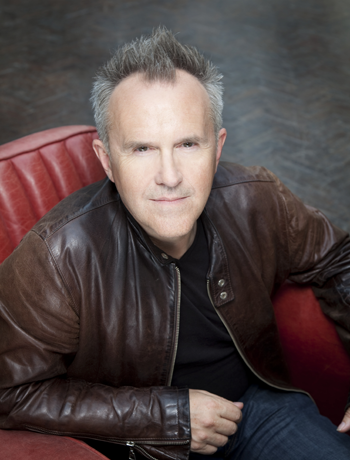
The next phase of your career, beginning in 1986 with One to One and ending in 1992’s In the Running, gradually saw you distancing yourself from the synth universe. Describe the directions you were pursuing during that era.
I wanted to experiment with lots of different things during that period. I had been so committed to electronic music, previously. At that point, I thought “I grew up playing piano and listening to music that was played in a more conventional way. Perhaps I should explore that.” So, that’s what I began doing. I was working with different people in the studio, using brass sections, strings, drums, guitars, and choirs. I’m really glad I did that. That work was nowhere as successful as the early work, but I definitely developed my ear and writing ability, as well as my ability to work with other people and experiment. I think the work turned out very well. I’m still proud of those records. If you get on the railroad track and stick to doing one thing your whole career, you’re never going to learn anything. You’re never going to have a perspective on different areas and possibilities. I remain really happy with that era.
Have you ever felt like you were a prisoner of the first two albums?
No, I’ve never felt that, I can honestly tell you. You see, from my perspective, there are two audiences. There’s the audience that has a general knowledge of the music scene and what pops to the surface. There’s also a second audience who are avid followers of what I do. I’m more in touch with them. I recently did a pretty big tour of the US, playing large outdoor venues like the Greek Theatre in Los Angeles. These gigs have been full and they’ve been attended by that larger, more general audience. Now, when I play venues like Shepherd’s Bush Empire, those are my core fans who are attending. They’re coming to hear new music and obscure tracks. They’ve really invested in having a relationship with the music. They’re part of my team. I think it’s good for artists to realize there are those two different audiences. They’re both great and it’s a privilege to have them. You have to look after both of them.
Describe the career shift that occurred after the release of In the Running.
I was at the end of the honeymoon period with the record label at which point I wasn’t selling as many records anymore. There was a diminishing level of interest from them. I’m sure everyone has to have that experience at some point when they’re signed to a label. It was the end of the era for me with a major label. While I was making the album, I had the sense that this might well be the last Warner Bros. album. I still put a huge amount of effort into it. I think it’s a really great record. But when I realized they weren’t going to re-sign me, it became a big turning point. I initially thought it was all over and that I might as well just pack it all in. After six weeks of feeling like that, I thought “No, this is probably the best thing that ever happened to me. Now, I can be utterly responsible for my life and career.” So, I formed my own label, started doing the kind of touring I wanted to do, and started working with the Internet. It was a whole new world and I’ve been really happy there ever since. It totally suits me.
Tell me about the freedom establishing your independent label Dtox created for you.
It’s another example of things coming together. It started right when the Internet was taking off. Suddenly, I could communicate with my fans from around the world through email and websites, and the potential for operating as an independent artist emerged. Of course, I was very grateful for having the launch pad of a major label. I had a name in many territories around the world, which gave me a great head start. Now, I could make the records I wanted to make. I funded them myself, including the videos. I was in charge of every creative element. What comes with that is that you have to have clear determination of what you want to do, otherwise you’ll just idle your time away. When you’re your own boss, you’re responsible for getting into the studio, producing the work, getting on tour, and doing all the things you need to do. It really developed me as a person.
I also signed other people to the label for awhile. My biggest musical success was a young man named Martin Grech. He signed to Dtox when he was still at school. I worked with him to develop his music and put his album together. I put a team together to work on it and then all the major labels wanted to sign the album or license it from Dtox, including Interscope. He signed a huge publishing deal. What happened after that was unfortunate. I had this big dream of nurturing him as an artist and giving him the proper oxygen to develop and grow. But the lure of signing to a big label was too much to resist, so after the first album, the partnership ended. But young people have to do what they want to do, right? [laughs]
Ordinary Heroes found you pursuing a new musical concept. How do you reflect on that album?
I’ve been trying to educate myself to make albums that hang together stylistically, so they’re not an eclectic mix of everything. With that album, I set clear goals of it being about piano, guitar, drums, bass, backing vocals, and string quartet. I tried to really stick to that. It was a great discipline and I learned loads doing it. Of course, I broke my own rules when I invited the Morriston Orpheus Choir to come and sing on one track that was begging for that element. But in the main, I did stick to my rules, so the work has a consistency to it. The songs were very intimate and revealing about myself in a really honest way. I’m very pleased with the album because it does work as a whole. I’m not always very good at that. I tend to get distracted and some albums contain too many different things. I think it can be a little bit confusing for people to listen to sometimes.
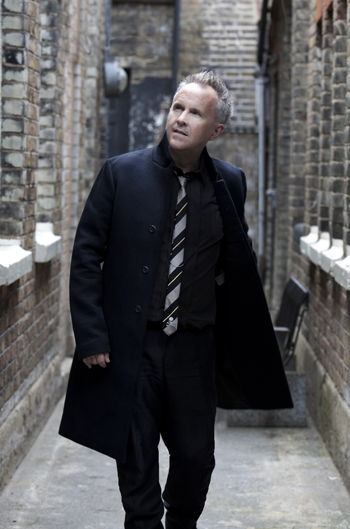
What was it like to arrange for a string quartet?
It was great. I really enjoyed it because I do a lot of vocal arranging, including work for a Buddhist choir. I’ve written a lot of choral music for that choir over the past 10 years. The discipline comes from my classical training. With the string quartet arranging, I did have somebody who knows how to do it properly help me as well. There are technical issues about the instruments that I didn’t know about, but I got educated. Again, I was able to learn stuff that can carry over to other projects.
You’ve been a practicing Buddhist for 20 years. Tell me how that influences your life and music.
It’s a big, central part of my life. It influences everything. It influences my behavior, including how I behave towards other people. Buddhism promotes the idea of absolutely respecting every single person, as well as respecting oneself. When you start from that point of view, it helps create harmonious situations around you, including with my band, managers, and other people involved in what I do, as well as with my fans and audiences. Buddhism flows through everything I do. I try very, very hard to be respectful of others. That respect has to come from an internal place and then things will naturally be oriented in that way. I won’t tell you I’m perfect at doing this, because I’m constantly working on it, but that’s the constant aim and goal.
Was there a particular moment that spurred you to first explore Buddhism?
There wasn’t a crisis or tragedy in my life related to it. I know those things happen often to people and when such a thing occurs, it can make them explore new ideas. But for me, I had an intuitive feeling about how one should approach life and live. I needed a kind of practice that could help me stay on course and that’s what I found with Buddhism. It tied in instinctively with what I felt about human existence. As a musician, one is used to the idea that if you want to be a good piano player, you have to work on it every day. If you want to be a great human being, you need to apply effort towards making sure you don’t go around the world wreaking havoc. Buddhism felt very natural to me when I found it as a way to become a better human being.
You’ve done a pair of solo piano albums. What made you want to pursue that universe for your work?
Those albums were another experiment for me. They are based on improvisation. They aren’t like me writing a song and working on it for months to ensure every note’s in place. The piano solos started because I wanted to give somebody a gift. I thought “What’s the most original gift I could give them?” I felt it would be a piece of music that is dedicated to them and about them. So, I thought about the person I wanted to give the present to and composed a piece, recorded three or four takes, chose the best one, and offered it to them. The albums reflect a more spontaneous, free-flowing type of writing than you normally get from me on my songwriting stuff. I really should do some more of that.
Did the idea of focusing exclusively on the simplicity and tactile nature of fingers on an acoustic instrument appeal to you as well?
Yes, but I think people can achieve that with other instruments, too. I honestly think even people using software, computers and keyboards can. I used to practice four-to-six hours a day when I was a teenager. The goal was to be able to play piano and not think about what I was doing, but focus on the music instead. You can do that with instruments that aren’t necessarily organic. People sometimes criticize electronic music as people pushing buttons and claiming there’s no emotion. But think about what a piano is. It’s a series of blooming switches. Learning how to play piano is learning how to press those switches in a very precise way. You also can sit down at a piano and make a horrible sound and empty a room. Another person can sit down at that same piano and bring tears to your eyes. It’s really all about the creative mind behind it. It’s related to the one-fingered keyboardists discussion earlier in our conversation. A person with limited technical abilities can bring tears to your eyes because they connect with their heart and mind. However, a person with the most florid technique might not be able to move you at all.
I think with any music, the thing we all need to be careful of is creating anything in complete isolation. If you don’t have any human contact when creating music, how can it be relevant to people who are going to hear it? That’s the danger of electronic music made in solitary disconnect from the world. One of my new pieces is called “The Human Touch.” It explores the idea that human beings are happiest when we’re interacting with each other, with all its warts, ups and downs, and vicissitudes. It’s still a really fun way to live. Isolation is not good for us and that really applies to music as well. We’ve always got to be working with others to get that joy.
What’s your perspective on the business environment musicians are operating within these days?
We’re at the point at which musicians have to be thinking about their own personal business models. They also need to consider what they love doing and how they can make the environment work for them. There is no longer an overall system to take care of musicians like there was in the past. When I started, we had record companies, recording studios we had to go to, distribution channels, including record stores, and radio. It was a structure and it really worked for the very few artists that managed to get through that door. It couldn’t be more different now. Today, a musician’s creativity has to extend to how they get their music out to people.
For me, I have to consider how I want to run my business. I’m not going to get on radio. I’m not going to get into shops. So, how do I connect with my fans to continue what I love doing, and what hopefully other people love me doing? How do I find the people that want to support me? Those considerations lead you to a way of making it all work. It’s about 100-percent total responsibility to make things happen. Now, artists have tools we didn’t have before. The Internet is the main point of distribution. We can have our own websites. We can do gigs. We can even do online gigs. Things are so open and many, many artists are making it work. The exciting thing is for artists to realize things are in their hands. I think it’s a very exciting time for musicians and we’re seeing great music being made as a result.